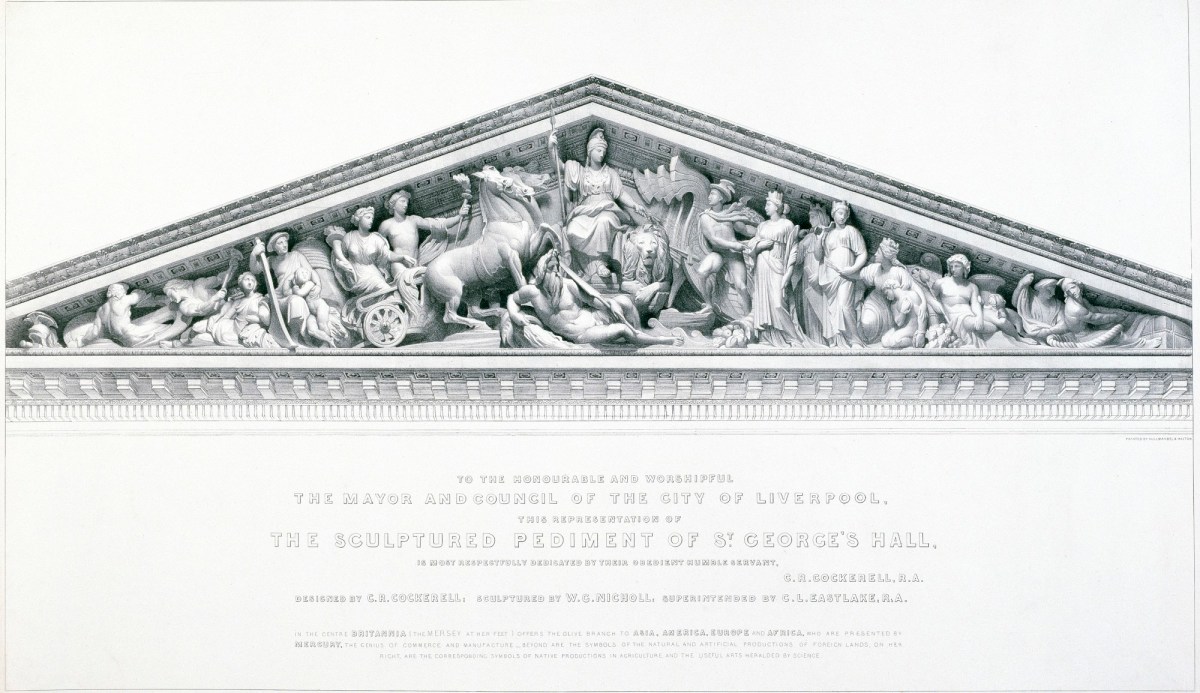
C.R. Cockerell RA, The Sculptured Pediment of St George's Hall, Liverpool, c. 1850.
Lithograph. 330 mm x 892 mm. © Photo: Royal Academy of Arts, London. Photographer: Prudence Cuming Associates Limited.
This image is not available to download. To licence this image for commercial purposes, contact our Picture Library at picturelibrary@royalacademy.org.uk
The Sculptured Pediment of St George's Hall, Liverpool, c. 1850
After C.R. Cockerell RA (1788 - 1863)
RA Collection: Art
Cockerell's design for the monumental sculpture in the south pediment of St George's Hall, Liverpool originated in his 'Sketch of an idea for the Frontispiece of a Public Building in England' exhibited at the Royal Academy in 1843 (see Watkin 1974, p. 238). In adapting his original concept however Cockerell was helped by Alfred Stevens who, according to his assistant Hugh Stannus, having been invited in 1849 to make 'a drawing of the Composition for publication from the unfinished work Nicholl's studio,' at the same time made 'suggestions for improvement by simplifying it and designing new groups for the difficult spaces at the ends.' (H. Stannus, Alfred Stevens and his work, London 1891, p.9). A beautifully rendered drawing of the pediment in the Stevens collection at the V&A (reprod. Stannus, op. cit., pl. XIII) would appear to lend support to Stannus' claim that 'Stevens afterwards drew the Pediment on stone, for [a] Lithograph which was duly published with large margins, and a long inscription, in which every one appears to have been mentioned but himself; an omission of which no satisfactory explanation has been given.' (loc. cit.). Cockerell had worked previously with W. G. Nicholl on the Taylorian Institution building in Oxford (completed 1845), for which the latter had carried out all the exterior decorative carving. The present commission however won Nicholl much wider public notice and marked a turning point in his career (see Gunnis, p.271). Eastlake's involvement in supervising the execution of the design is not mentioned in David Robertson's Sir Charles Eastlake and the Victorian art world (1978). The sculpture was removed from the pediment in 1950 and placed in storage after a piece became detached and fell to the ground.
Object details
330 mm x 892 mm
Start exploring the RA Collection
- Explore art works, paint-smeared palettes, scribbled letters and more...
- Artists and architects have run the RA for 250 years.
Our Collection is a record of them.



